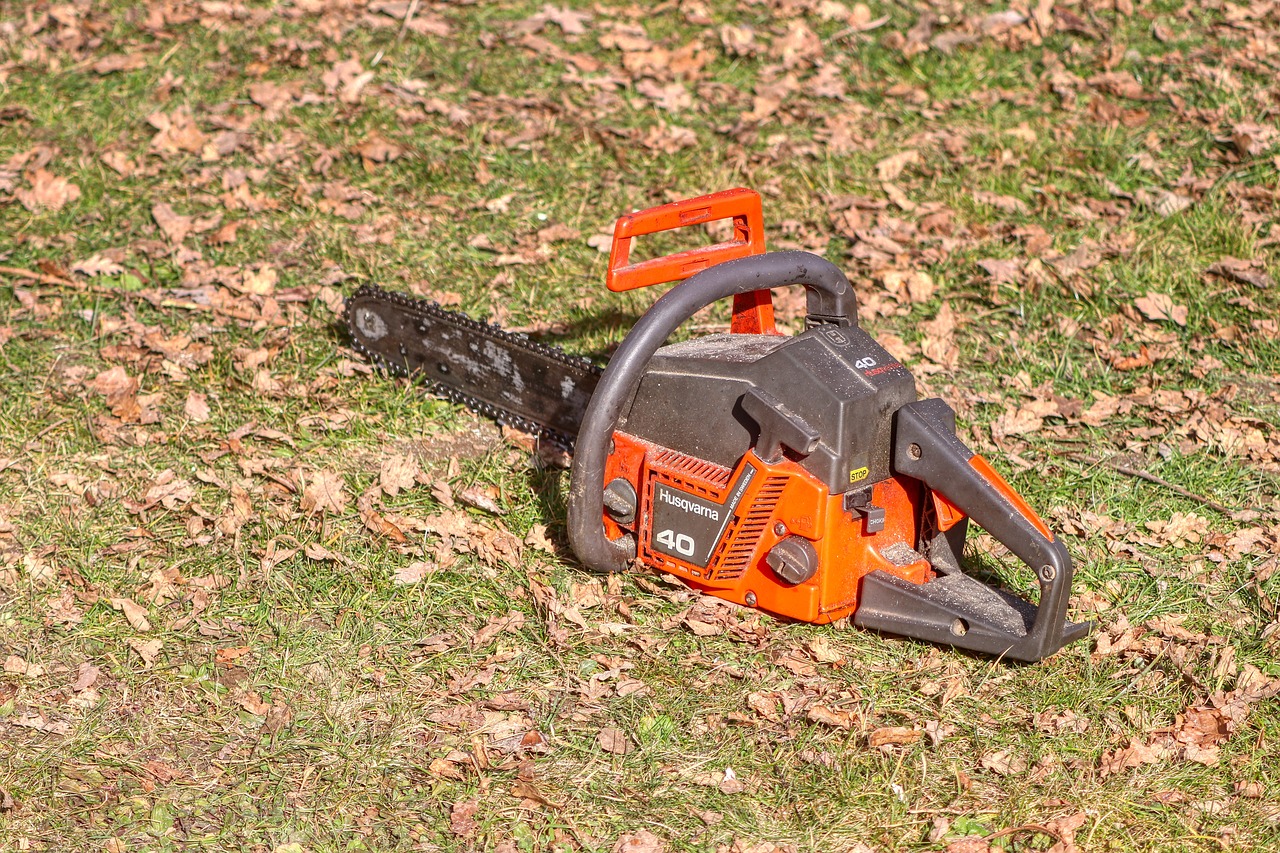Create a Wooden Hammock Stand: A DIY Project
Are you ready to transform your outdoor space into a serene oasis? Building your own wooden hammock stand is not only a fun DIY project but also a fantastic way to enjoy the great outdoors in style. Imagine lounging in your hammock, gently swaying in the breeze, with a good book or a refreshing drink in hand. Sounds dreamy, right? This article will guide you through the process of creating a sturdy wooden hammock stand, detailing materials, tools, and step-by-step instructions to help you achieve that ultimate relaxation spot.
Before we dive into the nitty-gritty, let’s talk about the joy of creating something with your own hands. There’s a certain satisfaction that comes from crafting a piece of furniture that’s not only functional but also adds beauty to your backyard or patio. Whether you're a seasoned woodworker or a complete novice, this project is approachable and rewarding. So, grab your tools, roll up your sleeves, and let’s get started!
When it comes to building a hammock stand, selecting the appropriate type of wood is crucial for durability and stability. You want a material that can withstand the elements and support your weight without wobbling. Some of the best wood options for building a hammock stand include:
- Cedar: Naturally resistant to rot and insects, cedar is lightweight and has a lovely aroma.
- Redwood: Known for its durability and resistance to warping, redwood is a beautiful choice that ages gracefully.
- Treated Pine: A cost-effective option, treated pine is treated with chemicals to resist decay, making it suitable for outdoor use.
Choosing the right wood not only ensures a sturdy structure but also enhances the aesthetic appeal of your hammock stand. Each type of wood has its own unique characteristics, so consider what fits your style and budget best.
Before starting your project, it's important to gather all necessary tools and materials. Here’s a quick rundown of what you’ll need:
- Wood (your choice from the options above)
- Measuring tape
- Circular saw or handsaw
- Drill with drill bits
- Wood screws
- Sandpaper or a power sander
- Wood stain or sealant (optional)
Having everything organized and ready will make the process smoother and more enjoyable. Plus, it’s much easier to get into the groove of building when you’re not running back and forth to grab tools!
Accurate measurements and precise cuts are vital for a well-constructed hammock stand. Start by measuring the space where you plan to place your stand. You want to ensure it fits comfortably without feeling cramped. Typically, a hammock stand requires two long beams for the sides and two shorter beams for the base. Here’s a simple way to approach measuring:
1. Measure the desired height of your stand. 2. Determine the width based on your hammock's length. 3. Mark your wood with a pencil before cutting.
Once you have your measurements, it’s time to cut your wood pieces to the correct dimensions. This step is crucial, so take your time to ensure accuracy. A clean cut will make the assembly process much easier.
When using power tools, safety should be a top priority. Always wear protective gear, such as goggles and gloves, to safeguard against wood splinters and debris. Make sure your workspace is clean and free of clutter to prevent accidents. Remember, a little caution goes a long way in ensuring a safe DIY experience!
Different cutting techniques can affect the quality of your wood pieces. For instance, using a circular saw can provide straight, clean cuts, while a jigsaw can help with curved cuts if you’re feeling adventurous. Whichever method you choose, ensure your cuts are as precise as possible to avoid any wobbling in your stand.
Once your wood is cut, assembling the stand is the next step. Begin by laying out your pieces on a flat surface. Start with the base, securing the shorter beams to the longer beams using wood screws. Make sure everything is level and square before tightening the screws. This will provide a solid foundation for your hammock stand.
Next, attach the vertical beams that will support the hammock. Ensure they are evenly spaced and securely fastened. Double-check your measurements as you go along to avoid any last-minute adjustments. Once everything is assembled, give it a gentle shake to test its stability.
After assembly, adding finishing touches enhances both aesthetics and durability. Sand down any rough edges to prevent splinters, and consider applying a wood stain or sealant to protect your stand from the elements. This not only prolongs the life of your stand but also gives it a polished look that you’ll be proud to show off.
To ensure longevity, regular maintenance is key. Here are a few tips to keep your wooden hammock stand in excellent condition:
- Inspect for any signs of wear or damage regularly.
- Reapply sealant or stain as needed, especially after harsh weather.
- Keep the stand clean by wiping it down with a damp cloth.
Personalizing your hammock stand can make it uniquely yours. Consider adding a splash of color with outdoor paint, or embellishing it with decorative elements like fairy lights or hanging plants. You could even add a small shelf for drinks or books, making your relaxation spot even more inviting.
Q: How much weight can a wooden hammock stand hold?
A: This largely depends on the type of wood used and the construction method. Typically, a well-built wooden hammock stand can hold between 400 to 600 pounds.
Q: Do I need to treat the wood before assembling the stand?
A: It’s recommended to treat the wood with a sealant or stain before assembly to ensure it’s protected from moisture and UV damage.
Q: Can I use any type of wood for my hammock stand?
A: While you can technically use any wood, it’s best to choose durable and weather-resistant types like cedar, redwood, or treated pine for optimal performance.

Choosing the Right Wood
When it comes to building your own wooden hammock stand, the choice of wood is more than just a matter of aesthetics; it's a crucial factor in ensuring the durability and stability of your creation. You wouldn't want to invest time and effort into a project only to have it wobble or wear out quickly, right? So, let's dive into the best wood options that can withstand both the weight of a hammock and the elements!
First and foremost, you want to consider wood types that offer both strength and weather resistance. Some of the best choices include:
- Cedar: Known for its natural resistance to decay and insects, cedar is lightweight yet strong, making it an excellent choice for outdoor furniture.
- Redwood: Similar to cedar, redwood is naturally resistant to moisture and pests. Its rich color and grain also add a touch of elegance to your hammock stand.
- Pressure-Treated Pine: While not as naturally resistant as cedar or redwood, pressure-treated pine is treated to withstand the elements, making it a cost-effective option.
- Teak: If you're willing to splurge a little, teak is incredibly durable and weather-resistant, ensuring your hammock stand will last for years.
Each of these wood types has its unique qualities, and your choice may depend on your budget, availability, and personal preference. For example, if you're looking for something that blends beautifully with nature, cedar or redwood might be your go-to. On the other hand, if you're on a tight budget but still want something sturdy, pressure-treated pine could be your best bet.
Moreover, consider the environmental impact of your wood choice. Sourcing wood from sustainable forests or opting for reclaimed wood can not only reduce your carbon footprint but also give your hammock stand a unique character. Just imagine lounging in your hammock, knowing that your stand was built with eco-friendly materials!
In terms of dimensions, make sure to select wood that is at least 2x4 inches for the main supports. This thickness provides the necessary strength to hold the weight of the hammock and its occupants. The length will depend on the size of your hammock and the desired height of your stand. Always remember, a well-chosen wood will not only enhance the look of your hammock stand but also ensure it stands the test of time.
In conclusion, selecting the right wood is a fundamental step in your DIY hammock stand project. By choosing a durable and weather-resistant wood, you can create a sturdy and stylish addition to your outdoor space. So, grab your measuring tape and get ready to bring your vision to life!

Essential Tools and Materials
Before diving headfirst into your DIY project of creating a wooden hammock stand, it’s absolutely essential to gather all the right tools and materials. Having everything on hand not only streamlines the process but also ensures that you won’t find yourself halfway through the project, suddenly realizing you’re missing a crucial item. Think of it like preparing for a road trip; you wouldn’t want to hit the highway without checking your fuel and tire pressure, right? So, let’s get into what you’ll need!
First off, let’s talk about the materials. The main ingredient in your hammock stand is, of course, wood. You’ll want to select sturdy, weather-resistant wood that can withstand the elements. Some excellent choices include cedar, redwood, or even pressure-treated pine. Each of these options provides a good balance of durability and aesthetics. However, if you’re leaning towards a more eco-friendly choice, bamboo is also an option that is both strong and sustainable.
Now, you can’t just have wood without the right tools to shape it into your dream hammock stand. Here’s a quick rundown of the essential tools you’ll need:
- Measuring Tape: Accurate measurements are the foundation of any successful project.
- Circular Saw: For making those clean, precise cuts.
- Drill: Essential for creating holes for screws and anchors.
- Screwdriver: A must-have for assembling your stand.
- Sandpaper: To smooth out rough edges and surfaces.
- Level: To ensure your stand is perfectly balanced.
- Safety Gear: Don’t forget your goggles and gloves!
Having the right tools at your disposal is like having the right spices in your kitchen; they can make or break the final outcome. With these materials and tools, you're not just setting yourself up for success; you're also ensuring that your hammock stand will be a safe and enjoyable place to unwind.
In addition to the basic materials and tools, you may also want to consider some optional items that can enhance your project. For example, wood stain or sealant can give your stand a beautiful finish while protecting it from rain and sun damage. Similarly, decorative elements like rope or fabric can add a personal touch that reflects your style.
So, gather your materials, dust off those tools, and get ready to embark on this exciting DIY journey! With everything in place, you’ll be one step closer to creating a cozy retreat in your backyard where you can relax and soak up the sun.

Measuring and Cutting the Wood
When it comes to building your own wooden hammock stand, measuring and cutting the wood accurately is one of the most crucial steps in the entire process. Think of it as laying the foundation for a house; if the base is off, everything else will follow suit. To start, you'll need to gather your materials and tools. A measuring tape, a square, and a saw are your best friends here. Ensuring that each piece of wood is cut to the right dimensions is vital for the stability and durability of your stand.
Before you even pick up your saw, take a moment to plan out the dimensions. A typical hammock stand requires two long side beams, a couple of shorter cross beams, and additional supports. For example, if you want a stand that can comfortably hold your hammock, you might consider using dimensions like:
| Component | Length (inches) |
|---|---|
| Side Beams | 120 |
| Cross Beams | 48 |
| Support Beams | 36 |
Once you have your measurements down, it's time to cut. Here are some tips to keep in mind while cutting your wood:
- Double-Check Measurements: Always measure twice before you make a cut. This simple step can save you from costly mistakes.
- Use a Square: To ensure your cuts are straight and accurate, use a carpenter's square. This tool will help you maintain right angles.
- Cut with Care: When using a saw, whether it's a hand saw or a power saw, take your time. Rushing can lead to uneven cuts and potential injury.
After cutting, it's essential to sand the edges of your wood pieces. This not only makes them safer to handle but also prepares the surface for any finishing touches later on. A smooth edge will help your hammock stand look polished and professional. Remember, the quality of your cuts will directly impact the final product, so take your time and enjoy the process!

Safety Precautions
When embarking on the exciting journey of creating your own wooden hammock stand, safety should be your utmost priority. Working with power tools and heavy materials can be daunting, but with the right precautions, you can ensure a safe and enjoyable DIY experience. First and foremost, always wear appropriate personal protective equipment (PPE). This includes safety goggles to protect your eyes from flying debris, ear protection to shield your hearing from loud machinery, and a dust mask to avoid inhaling sawdust. Additionally, wearing gloves can help prevent splinters and cuts while handling wood.
Before you start cutting and assembling, take a moment to inspect your workspace. Ensure that it is clean and free from any clutter that could cause you to trip or stumble. A well-organized space not only boosts your efficiency but also minimizes the risk of accidents. If you are using power tools, make sure they are in good working condition. Check for frayed cords, loose screws, and any other signs of wear and tear. If something seems off, don’t hesitate to perform the necessary repairs or consult a professional.
It's also essential to understand how to properly use each tool. Read the user manuals thoroughly and familiarize yourself with the functions and safety features of your equipment. If you're unsure about a particular tool, consider watching tutorial videos or asking someone with experience for guidance. This knowledge can be invaluable, especially when operating saws, drills, or sanders.
When cutting wood, always use a stable surface. A workbench or sawhorses can provide the necessary support, ensuring that your cuts are accurate and that the wood doesn’t move unexpectedly. Additionally, keep your hands a safe distance from the cutting blade. A good rule of thumb is to use a push stick for small pieces of wood, keeping your fingers far from the danger zone.
Lastly, be mindful of your surroundings. If you’re working outdoors, ensure that the weather conditions are safe. Avoid working in high winds or rain, as these can compromise your safety. If you’re working indoors, make sure there’s proper ventilation to avoid inhaling harmful fumes from paints or stains. By following these safety precautions, you can focus on the joy of crafting your hammock stand without worrying about potential hazards.
As you prepare to build your wooden hammock stand, you might have some questions. Here are a few common inquiries to help guide you through the process:
- What type of wood is best for outdoor use? Cedar and redwood are excellent choices due to their natural resistance to moisture and decay.
- How do I ensure my hammock stand is stable? Make sure to use proper bracing techniques during assembly and choose a level area for placement.
- Can I paint my hammock stand? Absolutely! Just ensure you use outdoor paint or sealant to protect the wood from the elements.
- How often should I maintain my hammock stand? Regularly check for signs of wear, and consider reapplying sealant or stain every year to keep it in top shape.

Cutting Techniques
When it comes to creating a wooden hammock stand, the you employ can significantly impact the overall quality and stability of your finished product. Precision is key here, and understanding the different methods available will help you achieve clean, accurate cuts that fit together perfectly. One of the most common techniques is the straight cut, which is essential for creating the main support beams of your stand. Using a circular saw or a miter saw for this task can yield excellent results, as these tools provide the necessary power and accuracy to cut through thick wood.
Another technique worth mentioning is the angle cut. This is particularly useful when you need to create joints or when the design of your hammock stand requires slanted cuts for better aesthetics or structural integrity. A miter saw excels in this area as well, allowing you to set specific angles easily. Don't forget to measure twice and cut once! This old adage holds true, especially when dealing with angled cuts, as even a slight error can lead to misalignment during assembly.
For those who are looking to add a bit of flair to their hammock stand, consider using a jigsaw for curved cuts. This tool allows you to create custom shapes or decorative elements that can enhance the visual appeal of your stand. However, be cautious with your technique; maintaining a steady hand is crucial to avoid jagged edges. To ensure smooth curves, you might want to use a template or a guide, which can help you follow your intended design more closely.
In terms of safety precautions, always wear protective gear such as goggles and gloves when operating power tools. Additionally, ensure your workspace is clear and well-lit to prevent accidents. Remember, a well-prepared environment not only boosts your efficiency but also minimizes risks. Below is a brief comparison of the cutting techniques mentioned:
| Cutting Technique | Best Tool | Ideal Use |
|---|---|---|
| Straight Cut | Circular Saw / Miter Saw | Main support beams |
| Angle Cut | Miter Saw | Joints and slanted cuts |
| Curved Cut | Jigsaw | Custom shapes and decorative elements |
By mastering these cutting techniques, you’ll not only enhance the structural integrity of your hammock stand but also add a personal touch that reflects your creativity. The joy of crafting something with your own hands is immeasurable, and with the right tools and techniques, you can create a beautiful piece that will provide relaxation for years to come.

Assembling the Stand
Once you have all your wood pieces cut to the correct dimensions, it’s time to dive into the exciting part—assembling your wooden hammock stand! This is where your vision starts to take shape, and you can practically feel the relaxation waiting for you. First, gather all your cut pieces, and lay them out in a way that resembles the final structure. This will give you a clear idea of how everything fits together. Think of it like a puzzle; each piece has its own place, and when they come together, they create something beautiful.
To begin the assembly, you’ll want to start with the base of the stand. This typically consists of two long horizontal beams that will support the weight of the hammock. Position these beams parallel to each other on the ground, ensuring they are spaced appropriately to accommodate the width of your hammock. Next, take the vertical posts, which will rise up from either end of the horizontal beams. Securely attach these posts using wood screws or bolts, ensuring they are perpendicular to the base for maximum stability. It’s essential to make sure everything is level; a stand that isn’t balanced can lead to unfortunate accidents, and nobody wants that!
As you continue assembling, you will need to connect the top beam to the vertical posts. This top beam is crucial as it is where your hammock will ultimately hang. When attaching this piece, be sure to use strong joinery techniques, such as pocket holes or dowel joints, to ensure a sturdy connection. If you’re feeling a bit adventurous, you can also consider adding diagonal bracing between the vertical posts and the top beam. This will provide extra support and prevent any wobbling, making your hammock stand as stable as a rock.
Once the main structure is assembled, it’s time to check everything again. Walk around the stand, give it a gentle shake, and make sure all screws and joints are tight. If you notice any loose connections, now is the time to fix them. Remember, the sturdiness of your stand is critical for your safety and enjoyment. After you’re satisfied with the assembly, take a moment to admire your handiwork before moving on to the finishing touches.
Now, if you want to make your assembly process even smoother, consider using a workbench or a flat surface to keep everything organized. Additionally, having a helper can be invaluable during assembly, especially when aligning pieces or holding parts in place while you secure them. And don’t forget to keep your tools within reach to avoid unnecessary trips back and forth!
In summary, assembling your wooden hammock stand is a rewarding process that transforms raw materials into a functional piece of outdoor furniture. By paying attention to detail and ensuring each connection is secure, you’ll create a sturdy stand that will support countless hours of relaxation. So, roll up your sleeves, grab your tools, and let’s make that hammock a reality!
Q: What type of wood is best for a hammock stand?
A: Hardwoods like oak or teak are excellent choices due to their durability and resistance to weather. Softwoods like pine can also work but may require more maintenance.
Q: How can I ensure my hammock stand is safe?
A: Always double-check that all screws and joints are tight, and consider adding diagonal bracing for extra stability. Regularly inspect your stand for any signs of wear or damage.
Q: Can I customize my hammock stand?
A: Absolutely! You can paint, stain, or even add decorative elements to make it uniquely yours. Just remember to use outdoor-safe finishes to protect against the elements.
Q: How do I maintain my wooden hammock stand?
A: Regularly clean the stand and apply a weatherproof sealant every year to protect it from moisture and UV rays. This will help extend its lifespan significantly.

Finishing Touches
After you’ve successfully assembled your wooden hammock stand, it’s time to focus on the that will not only enhance its appearance but also protect it from the elements. Think of this stage as applying the final brush strokes to a masterpiece; it’s where your hard work truly shines. A well-finished hammock stand can transform your outdoor space, making it not just functional but visually appealing as well.
First, consider sanding your stand. Sanding is crucial because it smooths out rough edges and surfaces, making your stand safe and pleasant to touch. Use a medium-grit sandpaper initially to remove any major imperfections, then switch to a finer grit for a smooth finish. It’s like giving your wooden stand a gentle massage, ensuring it feels just right. Remember to sand in the direction of the wood grain to avoid scratches and achieve a polished look.
Next, let’s talk about staining or painting. This step is where you can really express your personality! A stain can bring out the natural beauty of the wood, highlighting its grain and texture. Alternatively, a splash of color can make your hammock stand a vibrant focal point in your garden. When choosing a stain or paint, opt for products that are specifically designed for outdoor use, as they will provide better protection against moisture and UV rays. It’s like dressing your stand in a weatherproof outfit that keeps it looking fabulous, no matter what Mother Nature throws at it.
After staining or painting, applying a sealant is essential. A good sealant acts as a barrier against water and harmful UV rays, prolonging the life of your stand. Make sure to choose a sealant that is compatible with your chosen stain or paint. Apply it according to the manufacturer’s instructions, ensuring complete coverage. Think of this step as wrapping your stand in a protective cloak, shielding it from the elements while allowing it to breathe.
Finally, don’t forget about decorative elements. Adding personal touches can make your hammock stand feel like a true extension of your home. Consider hanging some string lights around the stand for a cozy evening ambiance, or add some colorful cushions to your hammock for extra comfort. You might even want to incorporate climbing plants or flowers around the base of the stand, creating a natural, inviting atmosphere. It’s all about making your space feel uniquely yours, a personal oasis where relaxation reigns supreme.
To wrap things up, let’s address some frequently asked questions that might pop into your mind as you embark on this DIY journey:
- How long will my wooden hammock stand last? With proper maintenance and care, your stand can last for many years. Regularly check for signs of wear and reapply sealant as needed.
- Can I use treated wood for my hammock stand? Yes, treated wood is a great option as it is more resistant to rot and insects, making it ideal for outdoor projects.
- What type of finish is best for outdoor use? Look for finishes labeled as weather-resistant or outdoor-specific. These will provide the best protection against the elements.

Maintenance Tips
To ensure your wooden hammock stand remains a cozy retreat for years to come, regular maintenance is essential. Think of it as giving your stand a little TLC, much like you would for a cherished garden or a beloved pet. The good news is that keeping your hammock stand in tip-top shape doesn't have to be a daunting task. Here are some simple yet effective tips to help you maintain your wooden hammock stand:
First and foremost, cleaning your stand regularly is crucial. Over time, dirt, leaves, and other debris can accumulate, leading to potential damage. A quick wash with mild soap and water will do wonders. Just grab a soft cloth or sponge and gently scrub the surfaces. Make sure to rinse thoroughly and allow it to dry completely to prevent any moisture from getting trapped in the wood.
Next, keep an eye on the wood's condition. Look for any signs of wear and tear, such as cracks or splinters. If you notice any, it’s best to address them sooner rather than later. Sanding down rough spots not only enhances the aesthetics but also prevents injuries. Use a fine-grit sandpaper to smooth out any rough edges, and be sure to wipe away any dust afterward.
Another important aspect of maintenance is weatherproofing your stand. If your hammock stand is exposed to the elements, consider applying a protective sealant or stain every couple of years. This will help shield the wood from moisture and UV rays, which can cause fading and deterioration. When selecting a sealant, choose one that is specifically designed for outdoor use to ensure maximum protection.
Additionally, if you live in an area with harsh winters, it's wise to store your hammock stand indoors during the off-season. This simple step can significantly prolong its life. If disassembly is not feasible, at least cover it with a waterproof tarp to protect it from snow and ice.
Lastly, don't forget to check the hardware! Regularly inspect the screws, bolts, and other fasteners to ensure they are tight and secure. A loose bolt can lead to instability, which is the last thing you want when you're trying to relax in your hammock. If you notice any rust or corrosion, replace those parts promptly to maintain safety and stability.
As you embark on your journey to create and maintain your wooden hammock stand, you might have a few questions. Here are some frequently asked questions that can help guide you:
- How often should I clean my hammock stand? Ideally, you should clean it every few months or after heavy use to prevent buildup of dirt and grime.
- What type of sealant is best for outdoor wood? Look for a sealant that is UV resistant and waterproof, specifically designed for outdoor wooden structures.
- Can I leave my hammock stand outside year-round? If you live in a mild climate, it might be fine, but it’s best to store it indoors during extreme weather conditions.
- How do I know if my wood is weathered? Look for signs such as graying, splintering, or cracks. If you notice these, it might be time to sand and reseal your stand.

Customization Ideas
Once you've built your wooden hammock stand, the fun doesn't stop there! Customizing your stand not only makes it uniquely yours but can also enhance its functionality and aesthetic appeal. Think of your hammock stand as a blank canvas; how can you make it a masterpiece that reflects your personal style? There are countless ways to add your touch, and here are some exciting ideas to consider.
First, let's talk about color and finish. A fresh coat of paint can do wonders! Whether you prefer a bold, vibrant hue or a soft, natural stain, the choice is yours. For a rustic look, consider using a wood stain that highlights the natural grain of the wood. If you’re feeling adventurous, why not use multiple colors? You could paint the legs one color and the crossbars another, creating a striking contrast that catches the eye.
Next, consider adding decorative elements. You might want to attach some hanging lanterns or string lights to your hammock stand for a cozy evening vibe. Imagine lounging in your hammock under a canopy of twinkling lights; it’s the perfect touch for those summer nights! Additionally, you could hang potted plants or flowers from the stand, bringing a splash of nature right where you relax.
Another great idea is to incorporate functional accessories. Think about adding a side table or a small shelf to hold your drinks, snacks, or books. You can easily attach a small wooden platform or use brackets to create a sturdy surface. This way, everything you need is within arm's reach while you enjoy your downtime.
For those who love to entertain, consider adding an umbrella holder or a sunshade. This not only enhances comfort but also protects you from the harsh sun on hot days. You can create a simple holder by drilling a hole in one of the vertical posts and inserting a pole for your umbrella. This little addition can transform your hammock area into a shaded oasis!
Lastly, don't forget about personalization. You could carve your initials or a meaningful quote into the wood, giving your stand a personal touch that tells your story. If you're not into carving, consider using stencils to paint your favorite phrases or designs onto the wood.
In summary, customizing your wooden hammock stand is an exciting opportunity to express your creativity. From choosing colors and finishes to adding functional accessories, the possibilities are endless. So, unleash your imagination and make your hammock stand a true reflection of your personality!
Q: What type of paint is best for outdoor use?
A: Look for exterior-grade paint or stain that is weather-resistant. This will ensure your stand remains vibrant and protected from the elements.
Q: How can I make my hammock stand more stable?
A: Ensure that you use sturdy wood and consider adding cross braces to the legs for extra support. Also, anchoring the stand into the ground can provide additional stability.
Q: Can I disassemble my hammock stand for storage?
A: Yes! If you use bolts instead of screws, you can easily disassemble the stand for storage during the off-season.
Q: How often should I maintain my hammock stand?
A: It’s a good idea to inspect your stand every few months and perform maintenance as needed, such as reapplying sealant or paint to protect it from the weather.
Frequently Asked Questions
- What type of wood is best for a hammock stand?
When it comes to building a hammock stand, hardwoods like oak or teak are excellent choices due to their strength and durability. However, pressure-treated pine is also a popular option as it offers great weather resistance at a more affordable price.
- What tools do I need to build a wooden hammock stand?
You’ll need a few essential tools to get started, including a saw (circular or miter), a drill, a measuring tape, and some basic hand tools like a hammer and screwdriver. Don’t forget safety gear like goggles and gloves!
- How do I ensure accurate measurements when cutting the wood?
To achieve precise cuts, always measure twice before cutting. Use a square to mark your lines clearly and consider using a clamp to hold your wood steady while cutting. This will help prevent any mistakes that could lead to wasted materials.
- What are the safety precautions I should take?
Safety is key when working with power tools. Always wear protective eyewear and ear protection. Make sure your workspace is clean and free from distractions, and never rush through the cutting or assembly process.
- How do I assemble the hammock stand?
Start by laying out all your cut pieces according to your design. Use wood screws to secure the joints, and consider using wood glue for added strength. Follow a clear step-by-step plan to ensure everything fits together snugly.
- What finishing touches should I add?
After assembly, you can enhance the look and durability of your hammock stand by sanding the surfaces smooth, staining it for color, or applying a weatherproof sealant. This not only protects the wood but also makes it visually appealing!
- How do I maintain my wooden hammock stand?
Regular maintenance is crucial for longevity. Clean it periodically and check for any signs of wear or damage. If you notice any rough spots, sand them down and reapply sealant as needed to keep it in great shape.
- Can I customize my hammock stand?
Absolutely! Personalizing your hammock stand can make it truly yours. Consider adding decorative paint, unique hardware, or even built-in features like a small shelf for drinks. The sky's the limit when it comes to creativity!



















